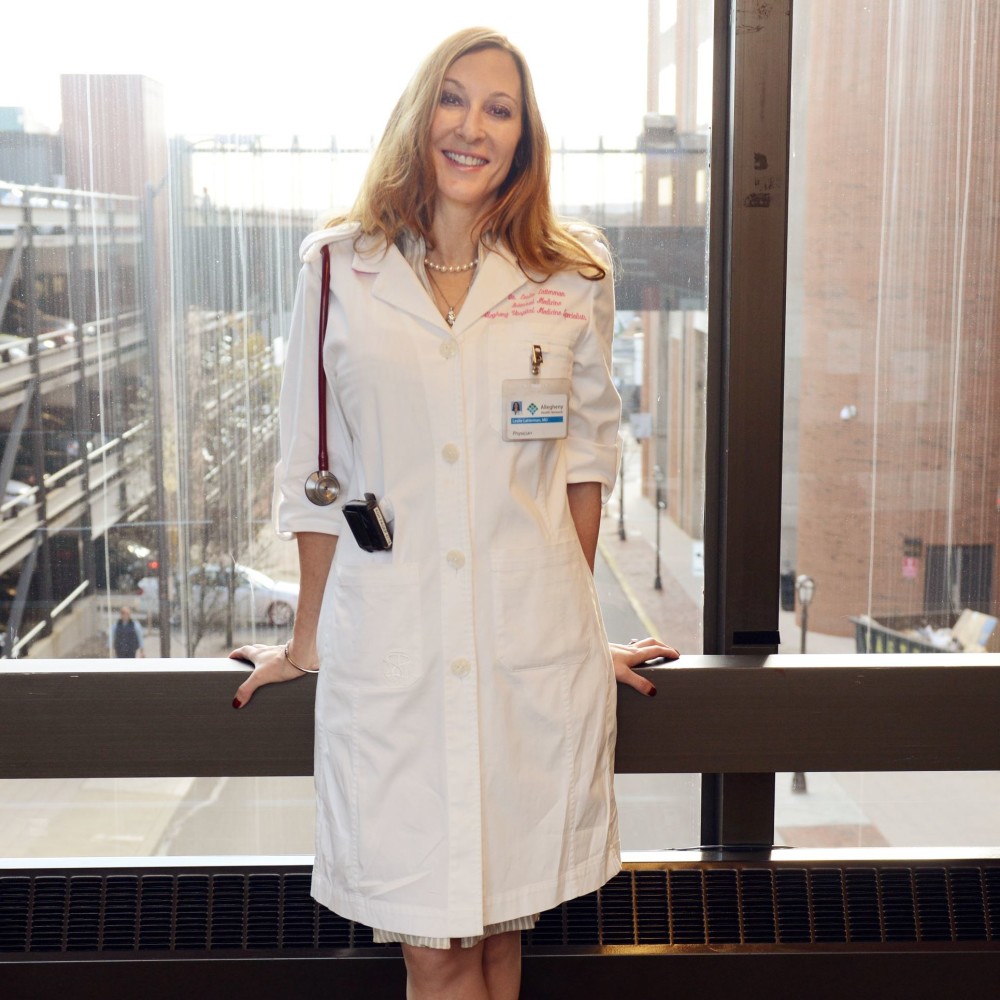By Anya Sostek
Pittsburgh Post-Gazette.
For years, Leslie Latterman and her female medical residents at Allegheny General Hospital would have the same conversations about the boxy, clunky white coats they wore in the hospital.
They didn’t fit right, the big deep pockets were always a mess, there was no place for personal items, and so on.
They would dream about ways to make the coats better in ways that were both fashionable and functional for the growing number of female doctors in the field. And one day, Dr. Latterman decided that she was actually going to make it happen. “She said, ‘You know, I’m actually going to do this,’ ” remembered Ariella Reinherz, who was then one of those residents and is now a pulmonologist at UPMC Shadyside.
And after six years working on it, Dr. Latterman of Point Breeze has indeed made it happen.
In the past few weeks, she has sold more than three dozen coats, mainly through word of mouth. The coats, sold under the brand Designs by Dr. Leslie (designerlabcoats.com), are available on the Web for $275, though the current introductory price is $199.99.
“Everyone has seen the standard white coat,” she said. “It’s 100 years old, it’s made for men, it doesn’t work for women. When you’re having a stressful day, or you’re working nights, you want a coat that works with you, not against you.”
Dr. Latterman, an osteopath who has practiced medicine for 24 years, said that by the end of a long shift, her neck and back ache because all the weight in a standard white coat is carried in the front pockets.
She said that women often have to load the coat up with more stuff than male doctors: a stethoscope might stay put securely on the broader shoulders of a male doctor, for example, but a female doctor might carry it in her coat rather than risk it falling off her shoulders onto the floor.
Men can also put wallets or phones in their pants pockets, while women more regularly wear clothes without pockets or with smaller pockets.
And there’s also the issue of women’s personal items, which can get lost in the large pockets on a men’s lab coat.
“I saw someone go to pull out her reflex hammer and don’t you know, a tampon went flying onto the patient,” said Dr. Latterman.
“It was the most embarrassing thing — she’s an excellent doctor, but what do you do?”
Dr. Latterman designed her coat with epaulets that can hold a stethoscope. A zippered wallet on a gold chain holds money and credit cards, and designated small pockets and hooks can contain wedding and engagement rings, reading glasses or cell phones.
“If you do a spinal tap or a central line, you can just hook your rings on and zipper up the pocket,” said Dr. Latterman. “Women always say they can’t wear their rings — now they won’t lose them.”
Dr. Latterman went to an expert at the Fashion Institute of Technology in New York City to develop the fabric for the coats, which is enzyme-washed with one-way stretch. Women can order pink or tan under the collar, with 10 choices of embroidery color. The coats are made in Los Angeles, by a company called UDesign4U that works with entrepreneurs.
Kindra Browning worked with Dr. Latterman in the 1990s and remembers her talking about the coats even then. When she found out they were finally available, she ordered one. “Anything that Leslie sets her mind to will happen and it’s been a lot of fun to watch this come to fruition and to hear about all of her adventures,” said Dr. Browning, a hospitalist at Aultman Hospital in Canton, Ohio. “She probably spent six months trying to figure out if she wanted pink pearlized buttons or blue.”
Wearing the coat in the hospital, Dr. Browning said it’s gotten positive attention from both male and female doctors. She appreciates the littlest details, such as that her heel doesn’t catch on the hem, because it’s double hemmed, or that an inner pocket protects a pen from leaking through.
Some hospitals give doctors their coats for free, while other doctors buy them at $60 for a basic coat or $150 for a higher-end model with the same basic design. Dr. Latterman believes that even though her coats are significantly more expensive than what’s on the market now, there is a market for them.
Medical school student bodies now average 48 percent female, according to an October report from the American Association of Medical Colleges. “We finally hit the tipping point where women’s issues are heard,” Dr. Browning said.














































































































































































































































































































































































